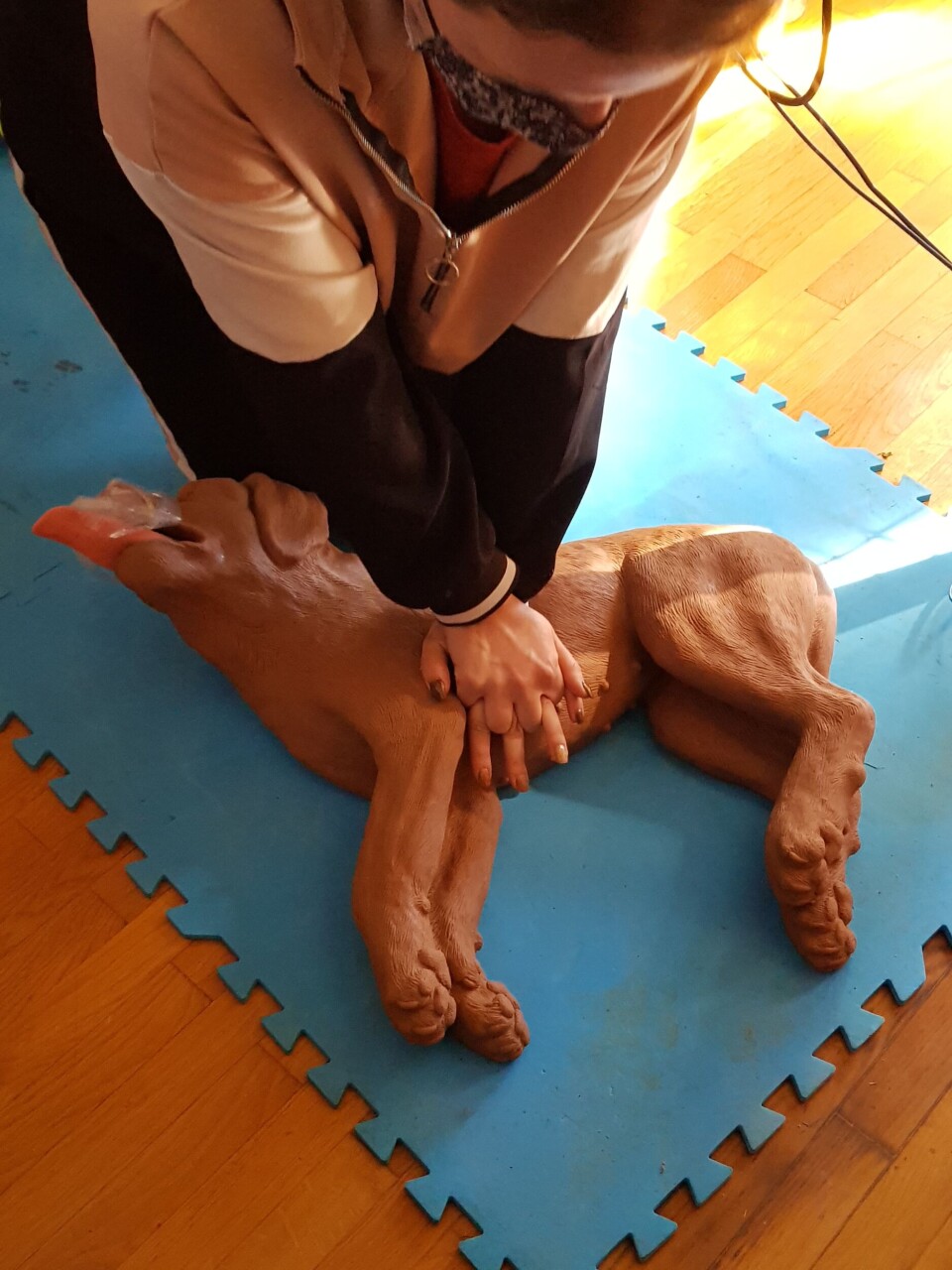-
Confrontations with wild boar increase in France despite more hunts
Boar numbers are rising and the ‘unpredictable’ animals can cause serious injury
-
Mairie issues alert over snake on loose in Vendée
The five-metre long snake was reported to have been run over by a car last week but is yet to be found
-
Hiker videos pack of seven wolves at Alpine ski resort
‘Unprecedented’ video captures wolves roaming on slopes
Animal first aid course gives French pet owners tips on emergency care
The training includes realistic touches like spurting blood and smoke machines

Manikins that spurt fake blood and the sounds of dogs howling in pain form part of a rigorous first-aid training course being offered for pet owners.
Isabelle Voidey, a former first-aider with the sapeurs-pompiers – crews that provide fire fighting, first aid and ambulance services – set it up and courses are held over a single day.
They cover everything from road accidents to poisoning.
A family of first-aiders
Ms Voidey was inspired to set up the scheme in Marcellaz-Albanais, Haute-Savoie, eastern France, one year ago.
“It was the culmination of a long process,” she says.
“My whole family are first-aiders, and I have always been too. I worked with the Red Cross at large public events, so there were very few animals involved, but the sapeurs-pompiers often got called out to cat and dog emergencies.”
Animal rights enshrined in French law
With five cats and a German Shepherd dog, Ms Voidey is a confirmed animal-lover and is pleased that French law recognises animals as sentient beings.
“It means the emergency services can intervene, though most responders are just taught to catch animals that have escaped, after a road accident, for example.”
Her own mindset changed when she did a course in animal first aid with a vet. She subsequently began developing infographics on how to treat cats and dogs.
“As well as road accidents, they can be victims of poisoning. Anti-freeze is particularly noxious and animals love the taste, plus many house plants are toxic to animals.
Read more: Warning in France over poisonous plants in shops and in the wild
Accident prevention
“Dogs are also put at risk during activities like agility. We see more and more dogs having heart attacks because people do not know how easy it is for them to overheat. They have a higher base temperature, and fewer ways of cooling down than humans.
“So we try to prevent accidents as well as providing first aid. We teach the warning signs of a distressed dog.
“It is not just for the dog’s sake. If a large dog collapses at the top of a mountain, for example, or is injured by a wild boar, it can be very difficult for the owner to carry them down.”
Keeping emotions in check
She says two modules that make a big difference are learning how to deal with the emotional aspect of emergencies, and how to approach an injured animal without it running away.
“Dealing with accidents can be very shocking and stressful for people who aren’t used to it. So I teach them how to detach themselves and react efficiently.”
Fake blood and howls of pain
Ms Voidey says other associations in France also now offer animal first-aid training, which is a positive development.
“It is not just playing nurses with your doggy. I start with the theory and then we move on to practising. We set up situations as realistically as possible. I have extremely convincing fake blood that we use, as well as lights and sounds.
“We also use bubble and smoke machines to make things more complex.
“To practise a gardening accident, I play a tape of a chainsaw or a hedge trimmer and the sound of a dog barking, then a crash and the dog howling in pain and someone screaming. People’s faces go ashen.
“Then we have a model that spurts blood unless the tourniquet is applied correctly. Students flip but it gives a good idea of what they might face.”
For more information, see the Cani SOS 74 Facebook page or email contact@cani-sos74.com. Courses cost €95 and include a first aid kit.
Related articles
Rising inflation blamed for increase in pet abandonment in France
France imposes new rules to stop rash pet purchases and avoid neglect
Animal suffering becomes a key presidential election topic in France
























